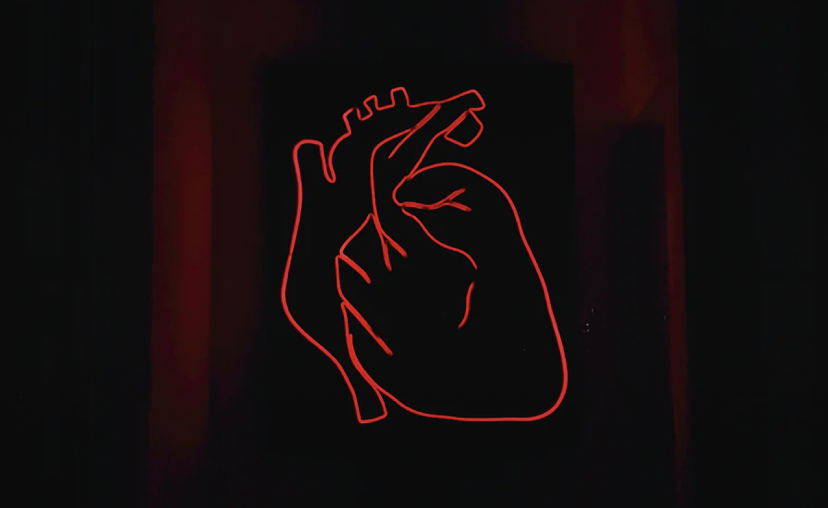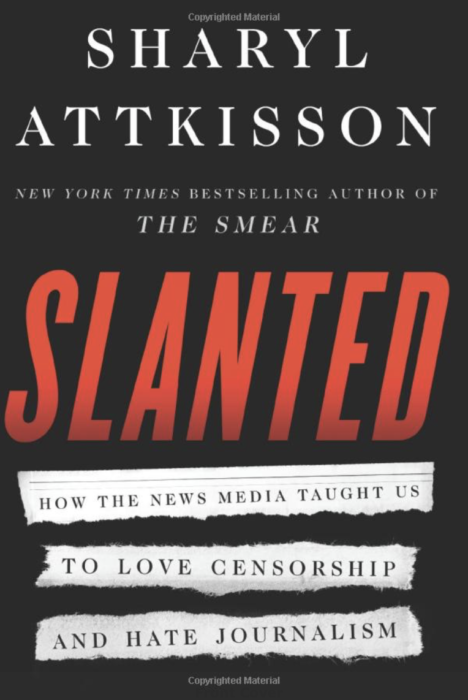
The potentially serious heart disorders of pericarditis, inflammation of the heart’s surrounding membrane; and myocarditis, inflammation of the heart muscle, are happening after Covid-19 vaccination substantially more often than previously reported.
That’s according to new research led by Dr. George Diaz, Section of Infectious Diseases, Providence Regional Medical Center Everett, Everett, Washington; published in the Journal of the American Medical Association (JAMA).
Diaz and his co-authors reviewed electronic medical hospital records of more than 2 million people who received at least one Covid-19 vaccination. They found 37 cases of vaccine-related pericarditis and 20 cases of vaccine-related myocarditis. That’s still “rare,” but far more than what was expected had Centers for Disease Control’s (CDC’s) numbers from the Vaccine Adverse Event Reporting System (VAERS) been accurate.
According to CDC, myocarditis was reported to the VAERSS at a rate of about 4.8 cases per million, or less than 1/2 per 100,000 (.48 per 100,000). The disorder was reportedly lumped in together with pericarditis in the VAERS reporting analyzed by CDC.
But the new analysis unearthed a rate of 1.8 per 100,000 people for pericarditis and 1 in 100,000 for myocarditis. That’s a combined rate that’s more five times higher than thought: 2.8 people per 100,000 rather than 1/2 per 100,000.
The information seems to confirm what scientists have long said has long been well-established: there is a significant underreporting of adverse event reports to the federal VAERS system. Therefore, each report of an illness is presumed to be more prevalent than what’s documented through VAERS.
This study shows a similar pattern, although at higher incidence, suggesting vaccine adverse event underreporting.
Myocarditis and Pericarditis After Vaccination for COVID-19, JAMA
Incidence of heart issue after Covid-19 vaccination
New Analysis
- Pericarditis: 1.8/100,000
- Myocarditis: 1/100,000
- Combined: 2.8/100,000
Previous CDC Analysis
Myocarditis: .48/100,000 or less than one-half per 100,000
Scientists say when myocarditis happens after Covid-19 vaccination, it usually happens in young people. Percarditis is more often reported in older people. Most of the patients in the analysis received the Pfizer or Moderna vaccines. Some, 3%, had the Johnson and Johnson shot.
According to the article in JAMA, about three quarters of the heart patients were men. The myocarditis cases were in men with a median age of 36 years old. The median age for the pericarditis cases was 59. No deaths were reported as of the publication of the information.
Temporal association does not prove causation, although the short span between vaccination and myocarditis onset and the elevated incidence of myocarditis and pericarditis in the study hospitals lend support to a possible relationship.
Myocarditis and Pericarditis After Vaccination for COVID-19, JAMA
The FDA added a heart warning to Pfizer and Moderna shots in June before knowing the incidences are more common.
Prior to the data showing myocarditis and pericarditis are more common than thought after Covid-19 vaccination, CDC said that the benefit of vaccination outweighs the risk for young people. That assessment involved how many additional cases of myocarditis in young people the vaccines would cause compared to how many hospitalizations and deaths it would supposedly prevent.
The scientists in the new study still recommend Covid-19 vaccines for young people as safe and effective. However, other scientists differ. They say that young people, who have a “near zero” statistical risk of serious illness or death from Covid-19, should not take the risks– known and as-yet unknown– of the Covid-19 vaccines.
Read the full article at the link, or the text pasted below.
https://jamanetwork.com/journals/jama/fullarticle/2782900
Rare cases of cardiac inflammation following SARS-CoV-2 vaccination have been reported.1–4 We reviewed the clinical records of vaccine recipients to identify cases of postvaccination myocarditis or pericarditis.Methods
Forty hospitals in Washington, Oregon, Montana, and Los Angeles County, California, that were part of the Providence health care system and used the same electronic medical record (EMR) were included. All patients with documented COVID-19 vaccinations administered inside the system or recorded in state registries at any time through May 25, 2021, were identified. Vaccinated patients who subsequently had emergency department or inpatient encounters with diagnoses of myocarditis, myopericarditis, or pericarditis were ascertained from EMRs (see eTables 1 and 2 in the Supplement for exclusions and definitions).
The monthly rates of first-time hospital diagnoses (excluding patients with previous diagnoses in January 2018–January 2019) in January 2019 through January 2021 (prevaccine period) and February through May 2021 (vaccine period) were compared.
The Wilson method was used to calculate 95% confidence intervals for single proportions. Change in incidence between periods and 95% confidence intervals for incidence were assessed using an exact rate ratio test assuming Poisson distribution, with a 2-sided P < .05 defining statistical significance. R version 2021 statistical software (R Foundation) was used. The Providence institutional review board approved the study with a waiver of informed consent.Results
Among 2 000 287 individuals receiving at least 1 COVID-19 vaccination, 58.9% were women, the median age was 57 years (interquartile range [IQR], 40-70 years), 76.5% received more than 1 dose, 52.6% received the BNT162b2 vaccine (Pfizer/BioNTech), 44.1% received the mRNA-1273 vaccine (Moderna), and 3.1% received the Ad26.COV2.S vaccine (Janssen/Johnson & Johnson). Twenty individuals had vaccine-related myocarditis (1.0 [95% CI, 0.61-1.54] per 100 000) and 37 had pericarditis (1.8 [95% CI, 1.30-2.55] per 100 000).
Myocarditis occurred a median of 3.5 days (IQR, 3.0-10.8 days) after vaccination (mRNA-1273 vaccine, 11 cases [55%]; BNT162b2 vaccine, 9 cases [45%]) (Table). Fifteen individuals (75%; 95% CI, 53%-89%) were male, and the median age was 36 years (IQR, 26-48 years). Four persons (20%; 95% CI, 8%-42%) developed symptoms after the first vaccination and 16 (80%; 95% CI, 58%-92%) developed symptoms after the second. Nineteen patients (95%; 95% CI, 76%-99%) were admitted to the hospital. All were discharged after a median of 2 days (IQR, 2-3 days). There were no readmissions or deaths. Two patients received a second vaccination after onset of myocarditis; neither had worsening of symptoms. At last available follow-up (median, 23.5 days [IQR, 4.8-41.3 days] after symptom onset), 13 patients (65%; 95% CI, 43%-82%) had symptom resolution and 7 (35%; 95% CI, 18%-57%) were improving.
Pericarditis developed after the first immunization in 15 cases (40.5%; 95% CI, 26%-57%) and after the second immunization in 22 cases (59.5%; 95% CI, 44%-74%) (mRNA-1273 vaccine, 12 cases [32%]; BNT162b2 vaccine, 23 cases [62%]; Ad26.COV2.S vaccine, 2 cases [5%]). Median onset was 20 days (IQR, 6.0-41.0 days) after the most recent vaccination. Twenty-seven individuals (73%; 95% CI, 57%-85%) were male, and the median age was 59 years (IQR, 46-69 years). Thirteen (35%; 95% CI, 22%-51%) were admitted to the hospital, none to intensive care. Median stay was 1 day (IQR, 1-2 days). Seven patients with pericarditis received a second vaccination. No patient died. At last available follow-up (median, 28 days; IQR, 7-53 days), 7 patients (19%; 95% CI, 9%-34%) had resolved symptoms and 23 (62%; 95% CI, 46%-76%) were improving.
The mean monthly number of cases of myocarditis or myopericarditis during the prevaccine period was 16.9 (95% CI, 15.3-18.6) vs 27.3 (95% CI, 22.4-32.9) during the vaccine period (P < .001) (Figure). The mean numbers of pericarditis cases during the same periods were 49.1 (95% CI, 46.4-51.9) and 78.8 (95% CI, 70.3-87.9), respectively (P < .001).Discussion
Two distinct self-limited syndromes, myocarditis and pericarditis, were observed after COVID-19 vaccination. Myocarditis developed rapidly in younger patients, mostly after the second vaccination. Pericarditis affected older patients later, after either the first or second dose.
Some vaccines are associated with myocarditis,5 including mRNA vaccines,1–4 and the Centers for Disease Control and Prevention recently reported a possible association between COVID-19 mRNA vaccines and myocarditis, primarily in younger male individuals within a few days after the second vaccination, at an incidence of about 4.8 cases per 1 million.6This study shows a similar pattern, although at higher incidence, suggesting vaccine adverse event underreporting. Additionally, pericarditis may be more common than myocarditis among older patients.
Study limitations include cases missed in outside care settings and missed diagnoses of myocarditis or pericarditis (which would underestimate the incidence), as well as inaccurate EMR vaccination information. Temporal association does not prove causation, although the short span between vaccination and myocarditis onset and the elevated incidence of myocarditis and pericarditis in the study hospitals lend support to a possible relationship.Section Editors: Jody W. Zylke, MD, Deputy Editor; Kristin Walter, MD, Associate Editor.Back to topArticle Information
Corresponding Author: George A. Diaz, MD, Providence Regional Medical Center Everett, 1700 13th St, Ste B3-018, Everett, WA 98201 (george.diaz@providence.org).
Accepted for Publication: July 26, 2021.
Published Online: August 4, 2021. doi:10.1001/jama.2021.13443
Author Contributions: Dr Robicsek had full access to all of the data in the study and takes responsibility for the integrity of the data and the accuracy of the data analysis.
Concept and design: Diaz, Robicsek.
Acquisition, analysis, or interpretation of data: All authors.
Drafting of the manuscript: Diaz, Parsons, Meier, Hutchinson, Robicsek.
Critical revision of the manuscript for important intellectual content: Diaz, Gering, Hutchinson, Robicsek.
Statistical analysis: Diaz, Meier, Robicsek.
Administrative, technical, or material support: Parsons, Gering, Robicsek.
Supervision: Robicsek.
Conflict of Interest Disclosures: Dr Diaz reported receipt of clinical trial research support from Gilead Sciences, Regeneron, Roche, Boehringer Ingelheim, and Edesa Biotech and scientific advisory board membership for Safeology. No other disclosures were reported.
Additional Contributions: We acknowledge the patients included in this study and the caregiver teams across the Providence organization.References1.Montgomery J, Ryan M, Engler R, et al. Myocarditis following immunization with mRNA COVID-19 vaccines in members of the US military. JAMA Cardiol. Published online June 29, 2021. doi:10.1001/jamacardio.2021.2833
ArticlePubMedGoogle Scholar2.Kim HW, Jenista ER, Wendell DC, et al. Patients with acute myocarditis following mRNA COVID-19 vaccination. JAMA Cardiol. Published online June 29, 2021. doi:10.1001/jamacardio.2021.2828
ArticlePubMedGoogle Scholar3.Bautista García J, Peña Ortega P, Bonilla Fernández JA, et al. Acute myocarditis after administration of the BNT162b2 vaccine against COVID-19. Rev Esp Cardiol (Engl Ed). Published online April 27, 2021. doi:10.1016/j.recesp.2021.03.009PubMedGoogle Scholar4.Rosner CM, Genovese L, Tehrani BN, et al. Myocarditis temporally associated with COVID-19 vaccination. Circulation. Published online June 16, 2021. doi:10.1161/CIRCULATIONAHA.121.055891PubMedGoogle Scholar5.Su JR, McNeil MM, Welsh KJ, et al. Myopericarditis after vaccination, Vaccine Adverse Event Reporting System (VAERS), 1990-2018. Vaccine. 2021;39(5):839-845. doi:10.1016/j.vaccine.2020.12.046PubMedGoogle ScholarCrossref6.Wallace M, Oliver S. COVID-19 mRNA vaccines in adolescents and young adults: benefit-risk discussion. Slide 28. Published June 23, 2021. Accessed July 7, 2021. https://www.cdc.gov/vaccines/acip/meetings/downloads/slides-2021-06/05-COVID-Wallace-508.pdf








